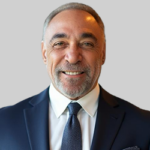Dangerous Drugs & Devices
- Home
- Practice Areas
- Dangerous Drugs & Devices
Nearly half of all Americans take at least one prescription drug. Pharmaceutical companies spend billions of dollars on medical marketing each year to promote their products to consumers and medical professionals.
The public is bombarded with information from Big Pharma touting the alleged benefits of countless medications and treatments. For some patients, prescription medication truly improves the quality of their lives. But for many, these drugs have questionable benefits at best, and serious, unintended side effects at worst.
Taking on drug and device makers requires a law firm that can stand up to some of the world’s largest and most powerful companies. Milberg has the experience, the track record, and the resources to successfully represent large groups of plaintiffs against medical companies.
Milberg’s Nationally-Recognized Defective Drugs & Devices Practice Group
Milberg’s Defective Drugs & Devices Practice Group attorneys are national leaders in mass torts and class actions. Our history of handling these types of claims has allowed us to take leadership roles in many national defective drug and device litigations, including cases against industry giants such as Merck, Zimmer, Bayer, Johnson & Johnson, GlaxoSmithKline, Pfizer, and Janssen.
Since Milberg’s founding in 1965, the firm has repeatedly taken the lead in landmark cases that have set groundbreaking legal precedents, prompted changes in corporate governance, and recovered over $50 billion for our clients.
Milberg handles defective drug and device cases in all 50 states and Puerto Rico on a contingency fee basis. Our Defective Drugs & Devices Practice Group attorneys have held leadership roles in many national drug and device litigations and recovered billions of dollars in compensation for injured consumers.
Big Pharma’s Big Marketing
To date, the United States is the “largest pharmaceutical market worldwide,” consistently accounting for nearly half of all global revenues.
The United States is one of only two countries that allow direct-to-consumer (DTC) drug advertising. On television, in print, on the internet, and elsewhere, Americans see a constant stream of pharmaceutical company ads promoting drugs and devices on the market.
According to Statista, the pharmaceutical industry in the United States spent $6.88 billion on DTC advertising in 2021, up from $6.86 billion in 2020.
Beyond DTC advertising, approximately 68% of annual pharmaceutical marketing is designated to persuading doctors and medical professionals. According to a recent report from healthcare solutions company Indegene, 62% of surveyed healthcare providers report feeling “overwhelmed” by the product-related promotional content they receive from drugmakers.
With digital and marketing trends in healthcare projecting a greater reliance on social technologies like social media and AI, Big Pharma’s reach is destined to expand.
DTC Drug Advertising Concerns
DTC drug advertising is regulated by the Food and Drug Administration (FDA). Drug companies are required to follow certain FDA rules when targeting consumers. For example, they must clearly and accurately state the risks associated with and the efficacy of their drugs.
However, these FDA regulations are widely criticized as “too relaxed” and “inadequately enforced.” According to the authors of the JAMA study, “despite the increase in marketing over 20 years, regulatory oversight remains limited.”
Prominent organizations, including the American Medical Association, have called for a ban on DTC drug advertising altogether. Arguments against this type of advertising cite drawbacks that include:
- Misinforming patients
- Overemphasizing drug benefits
- Promoting new drugs before safety profiles are fully known
- Manufacturing disease and encouraging drug overutilization
- Inappropriate prescribing
- Lack of rigorous regulations
- Increasing drug costs
Did you or a loved one suffer a serious prescription drug injury? Contact Milberg for a free case evaluation and learn your legal options.
How Safe Are The Drugs We Take?
The FDA doesn’t only regulate Big Pharma advertising. It also regulates the drug approval process, reviewing new drug applications and allowing or denying them.
At the heart of this process is a major conflict of interest. The FDA does not perform drug testing.
Drug testing responsibilities mostly fall on the drug companies themselves. After testing a given drug, the company must send its testing evidence to the FDA’s Center for Drug Evaluation and Research (CDER) to prove the drug is safe and effective for intended use. The CDER does not actually test the drug; it merely review’s the drug company’s data, findings, and proposed labeling. If the CDER review determines that the benefits outweigh the known risks, the drug is approved for sale.
Critics say this amounts to a situation where the fox is guarding the henhouse. Drug companies, which have a financial interest in getting their products approved, could falsify study results, hide dangerous side effects, or focus on the benefits of a drug while downplaying the risks.
As if this isn’t concerning enough, it gets worse. According to Pro Publica, Big Pharma funds three quarters of the FDA’s budget used for the drug review process.
“The FDA is increasingly green-lighting expensive drugs despite dangerous or little-known side effects and inconclusive evidence that they curb or cure disease. Faster reviews mean that the FDA often approves drugs despite limited information. As patients (or their insurers) shell out tens or hundreds of thousands of dollars for unproven drugs, manufacturers reap a windfall.”
*Pro Publica, “FDA Repays Industry by Rushing Risky Drugs to Market”
Additionally, the FDA’s reliance on post-market studies, or research performed after a drug is already on the market, poses additional risks to consumers.
Post-market studies can take years or longer to complete. Drugs with questionable safety and benefit profiles are allowed to be sold to consumers, who effectively act as real world clinical trial subjects. Unsurprisingly, many of the medications approved by the FDA are later found to have serious, even life-threatening, side effects.
Medical Devices
Medical devices cover a broad range of products, from surgical gloves and tongue depressors to artificial joints and pacemakers. Like pharmaceutical products, medical devices are regulated by the Food and Drug Administration. Like prescription drugs, there are serious questions surrounding the safety of many medical devices sold to Americans.
Many Devices Undergo No Clinical Testing
Medical devices are divided into three categories:
- Class I (low risk to patients)
- Class II (moderate risk)
- Class III (high risk)
Many Class I devices, such as bandages and gloves, do not require any FDA review prior to marketing, although they must be registered in a central database.
Class II devices, which include wheelchairs, contact lenses, and blood transfusion kits, often avoid clinical testing for safety and efficacy though the “510(k)” process. This process requires device makers to show that a new device is “substantially equivalent” to a device already on the market. Clinical testing is not required under 510(k) clearance.
Class III devices—products like heart valves, implanted prosthetics, and defibrillators—must be submitted for premarket approval (PMA). PMA typically requires clinical testing. However, testing requirements are lax, even compared to prescription drugs. In addition, device makers are frequently able to exploit regulatory loopholes, allowing them to obtain fast-track approval.
Of the tens of thousands of different medical devices on the market, very few have demonstrated that they are safe and effective over the test of time. According to the FDA, more than 80,000 deaths and 1.7 million injuries have been caused by medical devices over the past decade.
Did a medical device injure you? Schedule a free case review with an experience device and drug lawyer at Milberg.
Defective and Dangerous Drug Injuries
Most patients are willing to weigh the potential benefits of a drug or device against its potential risks when making a healthcare decision. But if there are flaws in the product or the way it is marketed, and these flaws are not publicly disclosed, it is impossible for patients and their doctors to make well-informed decisions.
When defective and dangerous drugs and devices slip through regulatory cracks and harm people, their only recourse may be to file a personal injury lawsuit against the product manufacturer(s).
Plaintiffs may be eligible to recover injury compensation from manufacturers that includes money for:
- Past, ongoing, and future medical expenses
- Lost wages
- Pain and suffering
- Diminished quality of life
- Funeral expenses and other wrongful death-related losses
Pharmaceutical companies and medical device manufacturers have paid millions, and even billions, of dollars in settlements and verdicts to compensate injury victims in the past. But filing a personal injury lawsuit against these large corporations is no easy task. It requires experienced defective drug lawyers with significant financial resources and a proven track record of success.
Practice Leaders

Marc Grossman, Senior Partner


Vicki J. Maniatis, Senior Partner




